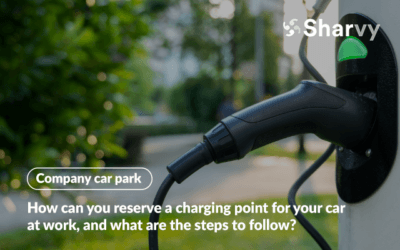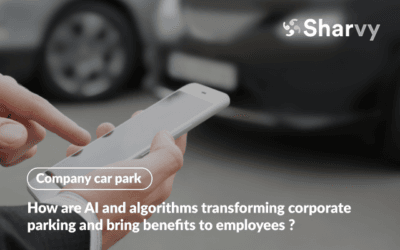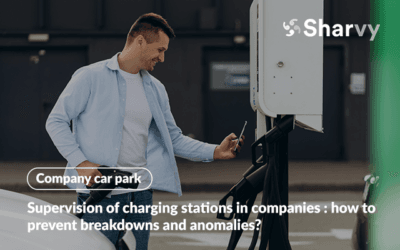Facilitate the management of your shared charging points
Simplify your transition to electric mobility & offer your colleagues a real booking interface to guarantee everyone access to charging points.
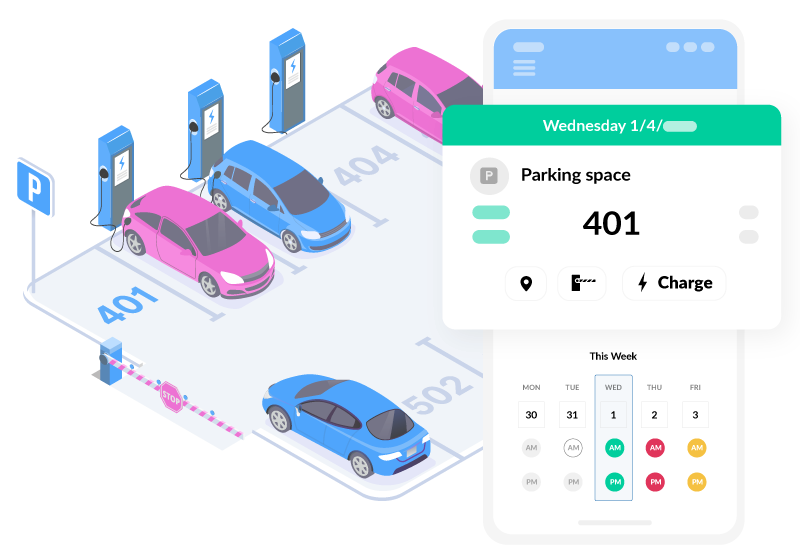
A web and mobile application to help companies,
public bodies and universities move towards electric mobility.
Facilitate access to charging points
Remove a major obstacle to adopting an electric vehicle, such as a plug-in hybrid, by installing shared charging points in your company car park.
Complying with regulations
Since June 1, 2022, non-residential buildings with more than ten parking spaces must install a charging point and cable pathways for 20% of the spaces.
Keep an eye on the availability rate
Enjoy a dashboard with all the recharging data of your colleagues in order to track the consumption & the status of your charging points in real time.
Promote well-being and QWL
Enhance the employee experience: no need for them to stop at the petrol station, as their battery can be charged during their workday.
How does Sharvy simplify the management of charging points ?
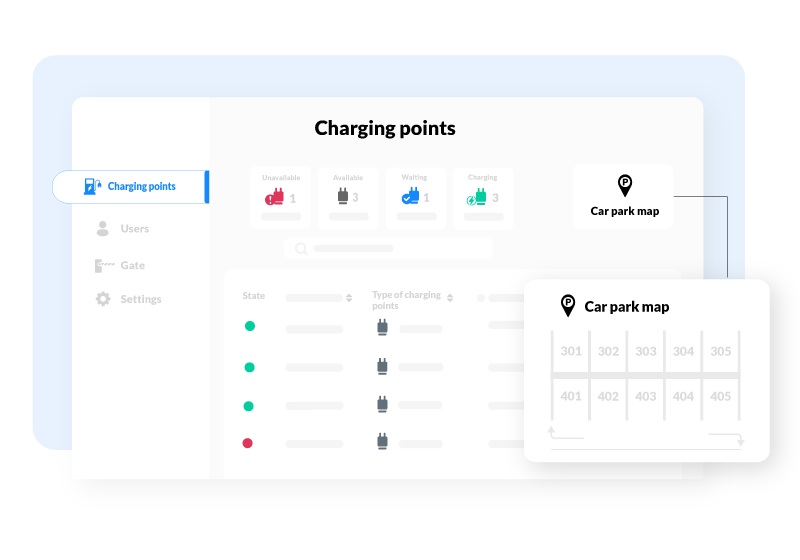
1. Set up your Sharvy space
![]() Definition of parking spaces and their types.
Definition of parking spaces and their types.
![]() Creation of a dynamic map of the car park.
Creation of a dynamic map of the car park.
![]() Definition of priority rules & management specificities, etc.
Definition of priority rules & management specificities, etc.
![]()
![]() Integration with your third-party solutions (HRIS, access control, charging stations).
Integration with your third-party solutions (HRIS, access control, charging stations).
2. Allow your teams to reserve a space equipped with a charging point.
![]() Release of spaces by holders on days when they are not using them.
Release of spaces by holders on days when they are not using them.
![]() Request to reserve a space equipped with a charging point.
Request to reserve a space equipped with a charging point.
![]() Automatic allocation of places by our fair algorithm.
Automatic allocation of places by our fair algorithm.
![]() Sending of notifications via email and through the mobile app.
Sending of notifications via email and through the mobile app.
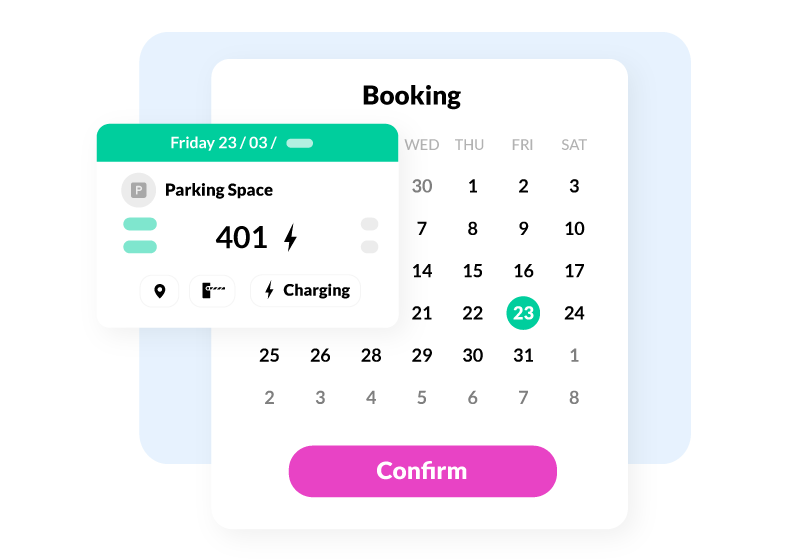
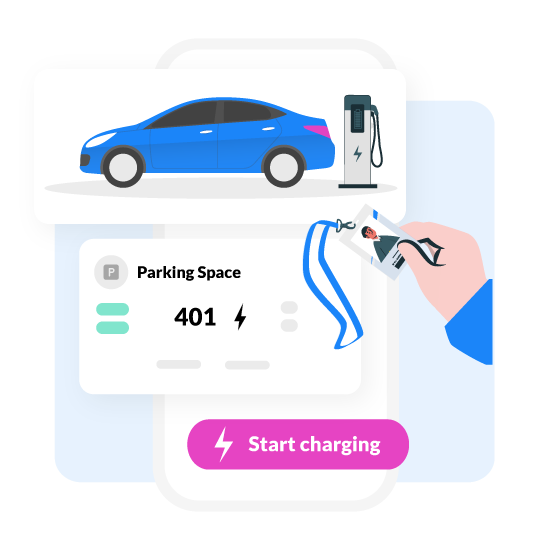
3. Control and secure access to your charging points.
![]() Authorization to unlock a charging point only to individuals with a reservation via the app or an RFID badge.
Authorization to unlock a charging point only to individuals with a reservation via the app or an RFID badge.
![]() Connection to your existing parking access control system (RFID readers & badges, license plate recognition cameras, etc).
Connection to your existing parking access control system (RFID readers & badges, license plate recognition cameras, etc).
![]() Connection to your HRIS software to enjoy a fully personalised experience & to refine control of attendance & access.
Connection to your HRIS software to enjoy a fully personalised experience & to refine control of attendance & access.
4. Supervise the use of your charging points.
![]() Dashboards & monitoring of charging point availability rates.
Dashboards & monitoring of charging point availability rates.
![]() Real-time view of the status of charging points.
Real-time view of the status of charging points.
![]() Alerts in case of a charging point malfunction.
Alerts in case of a charging point malfunction.
![]() Billing & payment for charging via the app.
Billing & payment for charging via the app.
![]() History of user activity & consumption (list of recharges, date, duration, users, energy charged).
History of user activity & consumption (list of recharges, date, duration, users, energy charged).
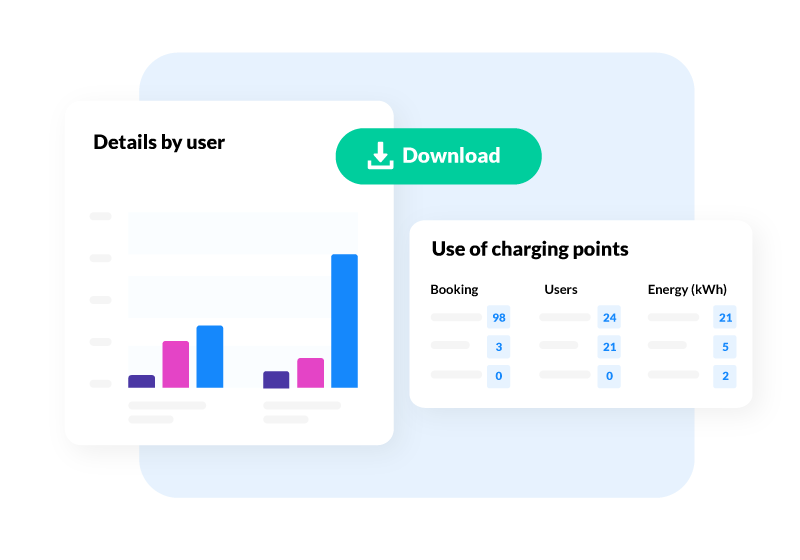
Do you want to install & manage electric charging points in
your car park & benefit from a solution to manage their sharing?
2 possible scenarios with the Sharvy application
EXISTING INFRASTRUCTURE
Sharvy can control charging points already installed in your car park.
| Benefits
Start, stop & track (in real time) the charge from Sharvy.
No need for another badge (digitisation of processes).
Booking of a charging point identified by your colleagues via Sharvy.
History of recharges made through the Sharvy app.
Payment for the charging session through Sharvy by your colleagues.
NO INFRASTRUCTURE
A more comprehensive project with advice & supply of charging points.
| Benefits
Selected models of charging stations, quality & at an affordable price.
Ordering of charging stations & installation by an OZEV certified electrician.
History of recharges made through the Sharvy app.
Start, stop & monitor (in real time) the charge from Sharvy.
Payment for the charging session through Sharvy by your employees.
Integrations with electric mobility providers to enhance the user experience
Sharvy is an authorized reseller of Go-e charging stations and can interface with other market players using the OCPP 1.6 protocol. Contact us to discuss!

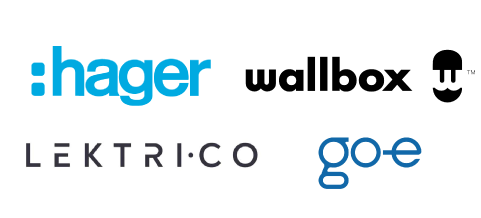
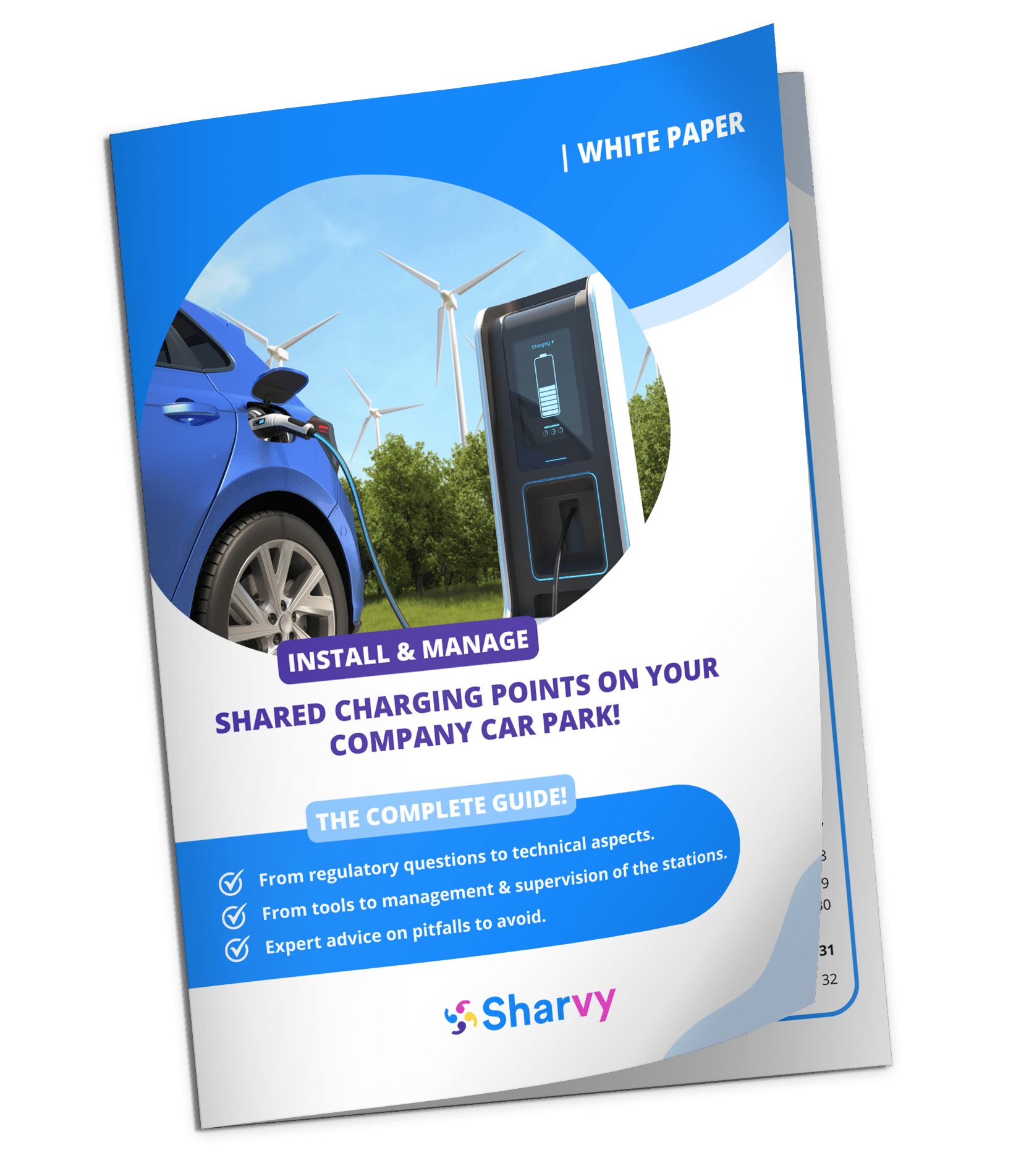
Do you have questions about the regulations, the technical aspects of installation, supervision & management of charging stations in your parking area?
Hundreds of companies use Sharvy, why shouldn’t you?



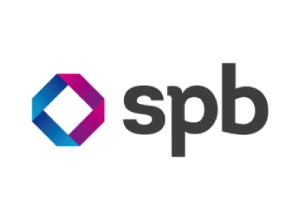


Frequently asked questions
How to ensure that the person who booked a charging point can charge?
From the Sharvy app, your colleagues can plan their on-site days by declaring their presence and booking a parking space equipped with a charging point. Once on-site, they just need to park in the reserved space and start/stop the charging (remotely) from the app.
However, if a colleague parks in a space reserved by another colleague, they will not be able to unlock the charging point and recharge their vehicle. Therefore, colleagues who have not reserved a space with a charging point have no incentive to park in these spaces.
How does the payment for charging sessions work from the Sharvy app?
The payment for charging can be made either by the company or directly by the employee through the Sharvy app. If the latter option is preferred, a dedicated STRIPE account is created to collect payments and send invoices for the charging sessions.
The necessary information to provide includes the company’s legal details, the responsible person’s information, and the IBAN of the account that will receive the payments. Users without access to charging through their company only need to add their bank card directly to their STRIPE account. Once the charging session is complete, Sharvy generates a payment via STRIPE and sends an invoice. The collected amounts, minus fees, are transferred to the client’s IBAN account.
Keep in mind that your fleet managers also benefit from a daily list of completed charges, charge details (users, duration, energy supplied & kWh), and an Excel export of the data if needed. This way, they can easily supervise the use of the charging points and obtain various data to facilitate subsequent pricing.
How to determine the pricing for the electricity consumed?
If you wish to recharge the cost of electricity to your employees, it is essential to define your billing model. There are several models, each with its advantages and disadvantages.
Time-based billing: This model is beneficial for companies with a limited number of charging points relative to the number of employees. It encourages employees to free up the charging point quickly once their vehicle is charged. However, this model is the least equitable due to the different vehicle models of your employees. Vehicles with slower charging times (such as plug-in hybrids) are penalised.
kWh-based billing: This model seems the fairest for all employees and suits any type of company. The company charges an equivalent related to kWh (as it is legally prohibited to charge directly per kWh), which includes the use of the charging point, kWh, and parking. This model offers more transparency to the fleet manager, who can easily evaluate the financial added value of each charging point compared to energy costs. However, unlike time-based billing, this model does not incentivise employees to free up the space quickly.
Flat-rate billing: In this case, you define a fixed price for a recharge. You can set this price arbitrarily, for example, by offering a monthly subscription to your employees. However, this model is disconnected from actual consumption and does not account for days when your employees are absent.
Need more information on Sharvy and corporate parking management?
Our latest posts on Smart Parking
How do you reserve a charging point for your car at work?
How do I recharge my car at work? Do I need to reserve a charging point? What solutions are available? Here are the answers!
How are AI & algorithms transforming corporate parking?
How are AI & algorithms redefining corporate parking? What are the benefits for your company & your employees? Focus!
Supervision of charging stations in companies : how to prevent breakdowns and anomalies?
Why is the supervision of charging stations essential for businesses? How can you prevent breakdowns and ensure their reliability? Focus.
Resources
Contact us
+44 117 463 6990

